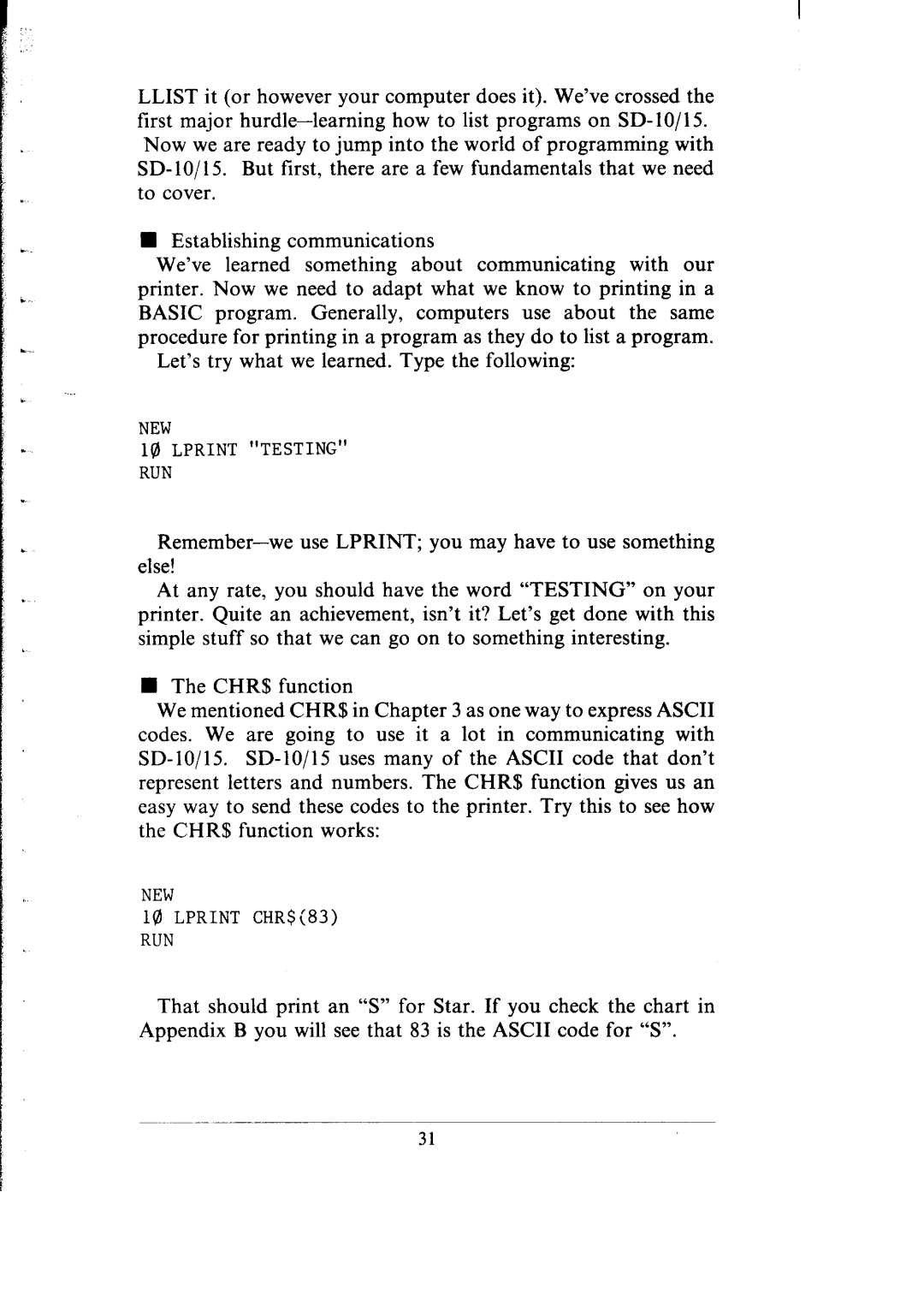
LLIST it (or however your computer does it). We’ve crossed the
first major
i | n Establishing communications |
| |
| We’ve learned something | about communicating | with our |
I. | printer. Now we need to adapt what we know to printing in a | |
BASIC program. Generally, computers use about the same | ||
| ||
| procedure for printing in a program as they do to list a program. | |
| Let’s try what we learned. Type the following: |
NEW
L18 LPRINT "TESTING"
RUN
At any rate, you should have the word “TESTING” on your printer. Quite an achievement, isn’t it? Let’s get done with this simple stuff so that we can go on to something interesting.
nThe CHR$ function
We mentioned CHR$ in Chapter 3 as one way to express ASCII
codes. We are going to use it a lot in communicating with
NEW
18 LPRINT CHR$(83)
RUN
That should print an “S” for Star. If you check the chart in Appendix B you will see that 83 is the ASCII code for “S”.
31
